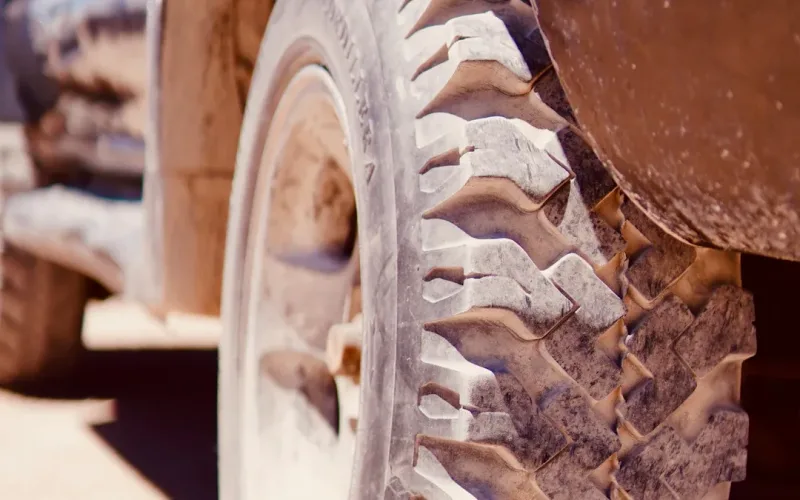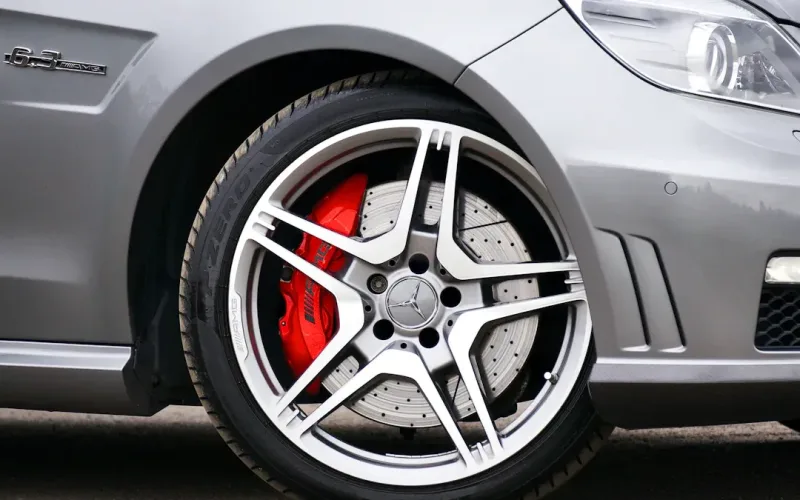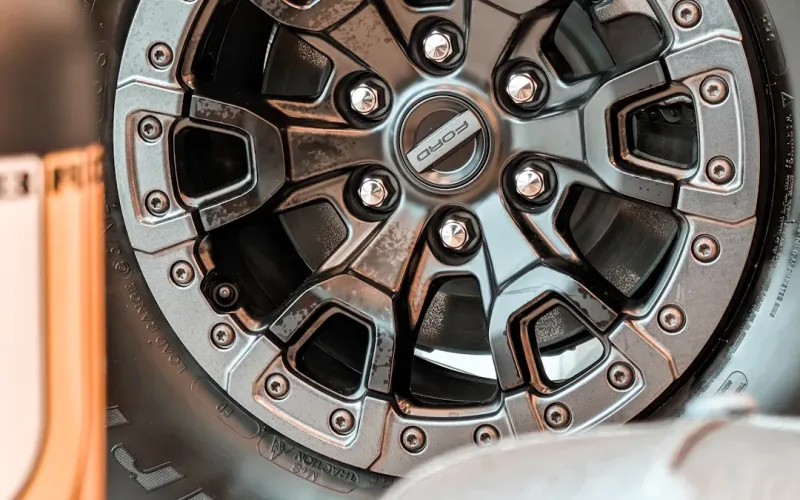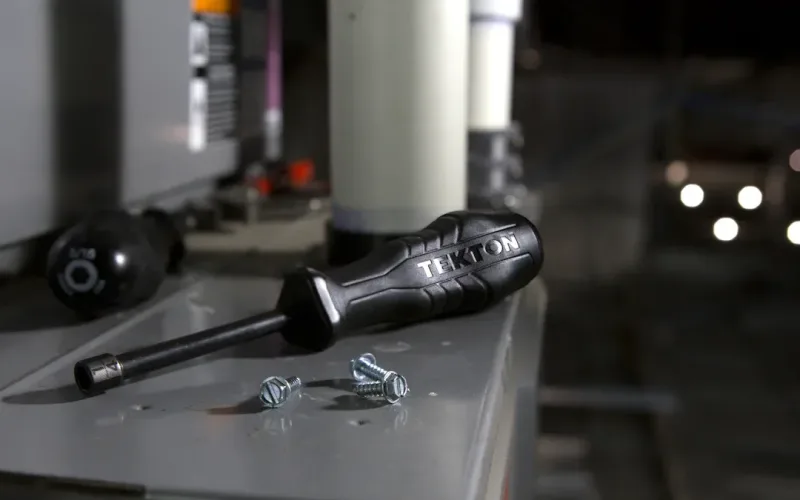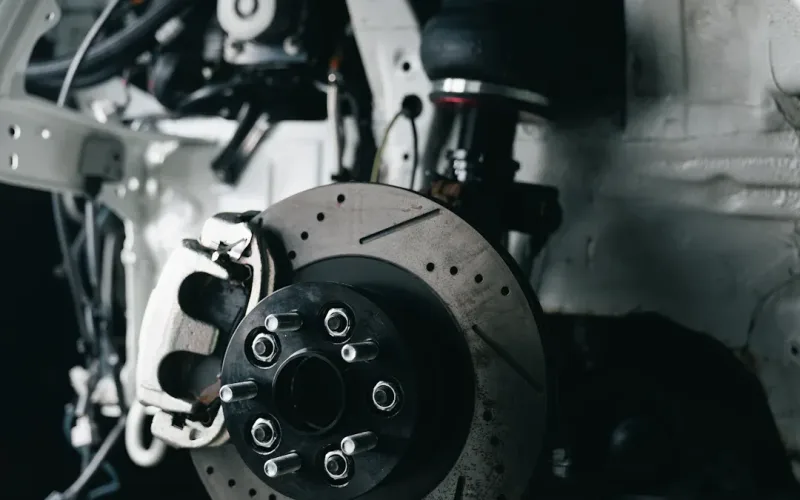

admin1
July 8, 2025
Stick-On and Clip-On Rim Balance Weights Which Offers Better Performance

When you choose rim balance weights, you must consider both performance and wheel type. Clip-on wheel weights give a secure fit on steel wheels, which helps maintain balance during demanding driving. In 2024, clip-on weights generated over USD 430 million in revenue, showing their popularity for commercial and aftermarket use. Stick-on wheel weights work best for alloy wheels and keep your rims looking clean. Balancing all wheel positions can improve fuel economy by up to 2% and extend tire life by as much as 80%. Your driving experience depends on using the right weights for your wheels and conditions.
Rim Balance Weights and Their Role in Vehicle Balance
Purpose and Function of Rim Balance Weights
When you drive, your wheels and tires must spin smoothly. Even a small difference in weight around the wheel can cause shaking or vibrations. Rim balance weights help you fix this problem. These small weights attach to your wheel to make sure the mass is spread evenly. You can find two main types: clip-on wheel weights and stick-on wheel weights. Each type attaches in a different way, but both help you achieve proper balance.
A wheel balancer machine checks your wheel and tire for any imbalance. It tells you where to place the weights. You might need to put weights on both the inside and outside of the rim to correct dynamic balance. This process helps your wheel spin without wobbling. When you use the right balancing weights for wheels, you reduce vibrations, improve ride comfort, and protect your tires from wearing out too soon. Proper balancing also supports your vehicle’s safety and helps you save money on repairs.
Tip: Always clean the wheel surface before installing stick-on weights. This step helps the weights stick better and last longer.
Impact of Balance on Driving Performance
Good balance makes a big difference in how your car feels on the road. If your wheels are not balanced, you might notice your steering wheel shaking or your seat vibrating. These problems can make driving less comfortable and even unsafe. When you use rim balance weights, you help your car drive smoothly and keep control, especially at higher speeds.
Research shows that balancing your wheels can improve fuel efficiency and extend tire life. For example, balancing can increase tire life by up to 80%. It also helps you avoid extra maintenance costs. A balanced wheel reduces the stress on your suspension and steering parts. This means your car stays in better shape for longer.
| Balance Metric | Condition | Change Post-Drive vs Pre-Drive | Significance |
|---|---|---|---|
| Tire Sway | Task | 37% increase | Significant |
| Path Length | Task | 16% increase | Consistent |
| Elliptical Area | No-Task | 35% increase | Significant |
This table shows how balance affects driving. When your wheels are balanced, you experience fewer vibrations and better control. Using tire wheel balance weight and wheel balancing weights helps you achieve dynamic balance and a safer, smoother ride. If you ever wonder, “how do car wheel balance weights work?”—they keep your wheels spinning evenly, so you enjoy every drive.
Stick-On Wheel Weights: Features and Performance
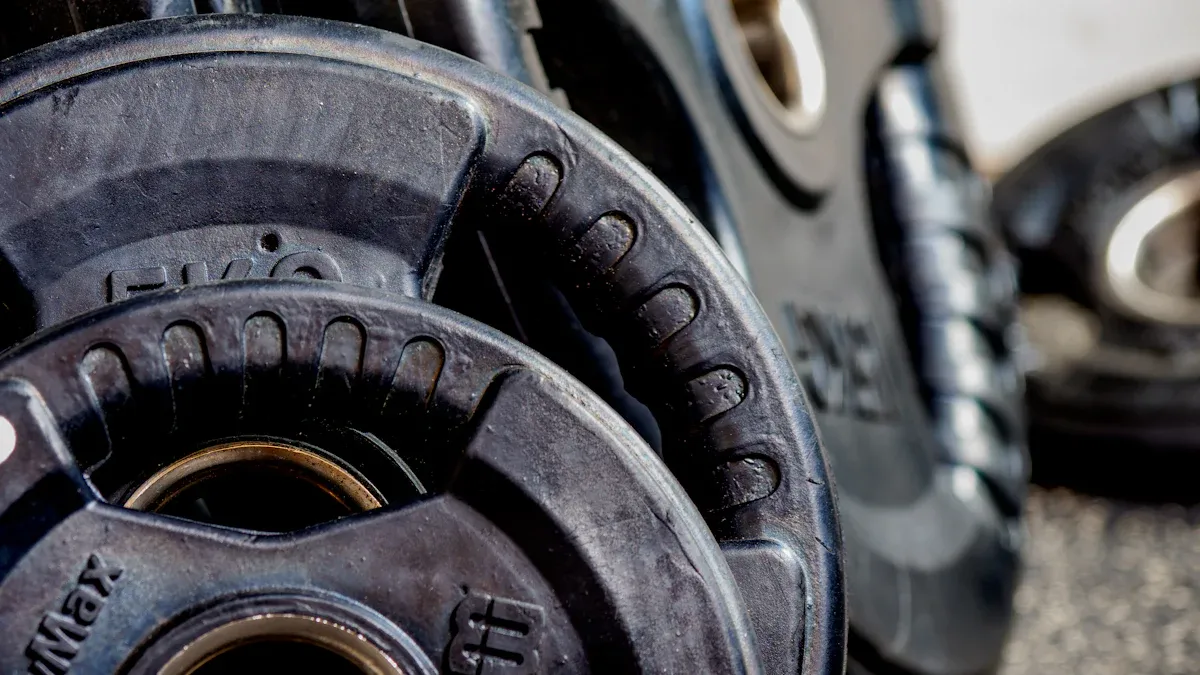
How Stick-On Wheel Weights Work
Stick-on wheel weights use a strong adhesive backing to attach directly to the inside of your wheel. You peel off the protective layer and press the weight onto a clean, dry surface. This adhesive forms a secure bond, holding the weight in place even when you drive over rough roads or through temperature changes. The low-profile design keeps the weights hidden behind the spokes, so your wheels look clean and stylish. You can place these weights exactly where your wheel balancer recommends, which helps you achieve precise balance and a smoother ride.
| Feature | Explanation |
|---|---|
| Adhesive backing | Sticks securely to alloy wheels without causing damage, needs a clean, dry surface. |
| Low-profile design | Reduces air resistance and keeps the weight hidden. |
| Precise placement | Allows exact positioning for optimal tire balance. |
| Material quality | Uses corrosion-resistant, lead-free materials for safety and durability. |
| Environmental performance | Adhesive stays strong in cold or hot weather. |
Performance Benefits of Stick-On Weights
You get several pros when you use stick-on wheel weights. These weights offer high balancing precision, with accuracy up to ±1 gram. This means your wheels spin smoothly, reducing vibrations and improving comfort. The weights work well on wheels up to 32 inches in diameter and can support up to 200 kg. Stick-on weights use lead-free zinc or composite materials, making them safer for the environment. The adhesive is strong and lasts long, especially if you let it cure for 24 hours before driving. You can use stick-on weights on alloy, custom, or steel wheels, which gives you flexibility.
| Performance Metric | Description/Specification |
|---|---|
| Balancing Precision | ±1 gram accuracy ensures precise wheel balancing |
| Measuring Time | About 8 seconds per wheel balance cycle |
| Maximum Wheel Diameter | Up to 32 inches supported |
| Maximum Wheel Weight | Supports wheels up to 200 kg |
| Material Composition | Lead-free zinc and composite materials |
| Adhesive Strength | Strong adhesive, 24-hour curing recommended |
| Environmental Compliance | Meets strict safety standards |
| Compatibility | Works with alloy, custom, and steel wheels |
| Durability | Corrosion resistant and stain-free |
Limitations and Drawbacks of Stick-On Weights
Stick-on wheel weights have some cons you should know. You must clean the wheel surface well before applying the weights, or the adhesive may not stick. If you use harsh chemicals or do not let the adhesive cure, the weights might fall off. These weights are not reusable, so you need new ones if you remove them. In very harsh conditions, like off-road driving, adhesive wheel weights may not stay attached as well as clip-on types. Regular checks help you spot any loose or missing weights early. Despite these cons, the key features of stick on wheel balancing weights make them a top choice for many drivers who want a clean look and precise balance.
Tip: Always allow the adhesive to cure for at least 24 hours before driving for the best results.
Clip-On Wheel Weights: Features and Performance
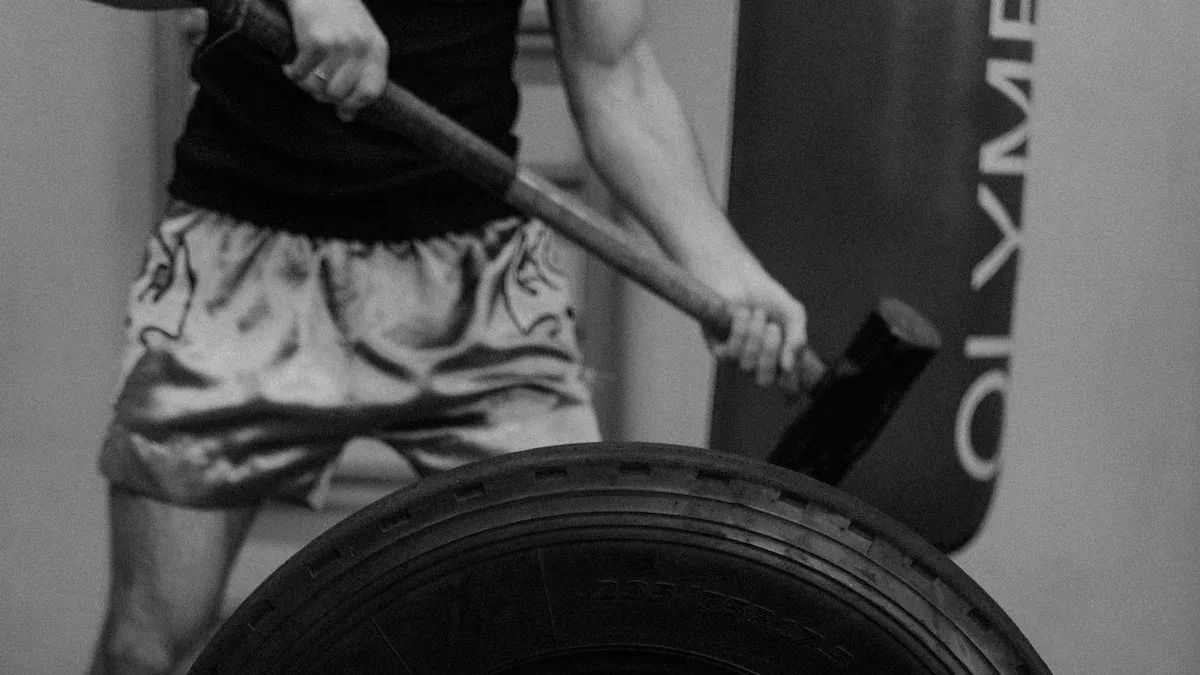
How Clip-On Wheel Weights Work
You use clip-on wheel weights by attaching them directly to the rim lip of your wheel. The process involves a special tool with a spring-loaded piston and a magnetized groove. This tool holds the weight in place. When you strike the piston with a hammer, it pushes the clip-on weight onto the rim, locking it securely. This method allows you to install weights quickly and safely. You can choose from different sizes and types to match your wheel. Clip-on weights physically clamp to the rim, so they stay in place even when you drive at high speeds or on rough roads. You do not need adhesives or extra preparation, which makes installation efficient.
Performance Strengths of Clip-On Weights
Clip-on wheel weights offer several pros for your vehicle. They provide a secure fit, especially on steel wheels with a pronounced rim lip. You can rely on them to stay attached, even in harsh driving conditions. Here are some key features of clip on wheel balancing weights:
- Clip-on weights resist fatigue and handle dynamic stresses well, as shown in studies by Topac and Myneni.
- OE-approved coatings help prevent corrosion, so your weights last longer.
- You can install them easily without special adhesives or tools.
- Balanced wheels reduce vibrations, improve handling, and extend tire life.
- Clip-on weights work best for steel wheels, making them ideal for commercial and standard vehicles.
A table below compares clip-on and stick-on weights:
| Feature/Aspect | Clip-On Wheel Weights | Stick-On (Adhesive) Wheel Weights |
|---|---|---|
| Secure Fit | Excellent on steel wheels | Needs clean surface for adhesion |
| Suitability | Best for standard steel wheels | Best for alloy and custom wheels |
| Aesthetic Appeal | More visible | Less noticeable |
| Installation | Easy with hammer and clamp | Needs surface prep, single-use |
Weaknesses and Considerations for Clip-On Weights
You should know some cons and considerations before choosing clip-on weights. These weights are visible on your rim, which may affect the look of your wheels. If you do not install them properly, you might scratch or damage alloy rims. Clip-on weights mainly fit steel wheels, so they are not suitable for most modern alloy wheels. Using the wrong clip type can cause the weights to detach. You need to check your wheels regularly for corrosion or damage. Cleaning your wheels helps prevent rust, and replacing damaged weights keeps your balance accurate. Always make sure you place the weights on the correct part of the rim for the best results.
Tip: Ask a professional to install clip-on weights to avoid rim damage and ensure proper balance.
Head-to-Head Comparison: Stick-On vs. Clip-On Rim Balance Weights
Balancing Accuracy and Effectiveness
When you want your wheels to spin smoothly, you need to focus on balancing. Both stick-on and clip-on weights help you achieve this goal, but they work in different ways. Stick-on weights let you place them exactly where your wheel balancer recommends. This precise placement gives you high accuracy, especially for custom or alloy wheels. You can use stick-on weights to fine-tune the balance, which helps reduce vibrations and makes your ride more comfortable.
Clip-on weights also provide strong balancing performance. You attach them to the rim lip, and they stay secure even when you drive fast or on rough roads. Many drivers choose clip-on weights for steel wheels because they offer reliable balancing in demanding conditions. You can trust them to keep your wheels steady, which helps protect your tires and suspension.
If you want the best precision, stick-on weights give you more control over placement. Clip-on weights, however, deliver consistent results for standard wheels and heavy-duty use. Both types of wheel balancing weights help you achieve a smoother ride, but your choice depends on your wheel type and how much control you want over the balancing process.
Durability and Long-Term Reliability
Durability matters when you want your wheel weights to last. Stick-on weights use strong adhesive, which works well on clean, dry surfaces. You get good performance on smooth roads, but harsh weather or dirty conditions can weaken the adhesive. If you drive in wet, muddy, or salty areas, you may need to check your stick-on weights more often.
Clip-on weights attach mechanically to the rim. This design makes them more reliable in tough environments. You can drive through snow, mud, or salty roads, and the weights stay in place. Clip-on weights also resist corrosion better, so they last longer in harsh conditions. If you remove a clip-on weight and it is still in good shape, you can reuse it.
Here is a table that compares the durability of both types:
| Durability Aspect | Stick-On Wheel Weights | Clip-On Wheel Weights |
|---|---|---|
| Performance on smooth, dry roads | Good adhesion and durability | Secure attachment |
| Performance in wet, muddy, salty | Adhesion may fail; requires clean, dry surface | Mechanically attached; remains secure |
| Reusability | Cannot be reused once removed | Can be reused if in good condition |
| Resistance to corrosion | Lower; adhesive degrades in harsh conditions | Higher; salt spray tests confirm rust resistance |
| Suitability for harsh environments | Less durable; needs more maintenance | More durable; suitable for snowy, off-road, and salty roads |
| Industry standards compliance | Meets standards but less durable in tough conditions | Meets standards with better long-term durability |
If you want the highest durability, especially for harsh environments, clip-on weights give you the best long-term reliability. Stick-on weights perform well under ideal conditions but may need more attention if you drive in challenging weather.
Aesthetics and Wheel Appearance
You care about how your wheels look. Stick-on weights offer a low-profile design that hides behind the spokes. This feature keeps your wheels looking clean and stylish. Many car owners choose stick-on weights for alloy or custom wheels because they do not want visible weights on the rim.
Clip-on weights, on the other hand, attach to the rim lip and are easy to see. You might notice them more, especially on wheels with open designs. Some drivers do not mind the look, especially if they value function over form. Clip-on weights work best for steel wheels, where appearance may not matter as much.
Tip: If you want your wheels to look their best, choose stick-on weights for a hidden, sleek finish.
Both types of weights help you achieve proper balancing, but stick-on weights give you a clear advantage in aesthetics. You can keep your wheels looking sharp while still enjoying a smooth ride.
Compatibility with Different Wheel Types
Choosing the right rim balance weight depends on the type of wheel and your driving environment. You will find that stick-on and clip-on weights each have strengths for different wheel materials and uses.
Stick-on weights work best with alloy wheels. These wheels often have smooth, painted, or polished surfaces. The adhesive backing on stick-on weights forms a strong bond, especially when you clean the wheel before application. This method keeps the weights hidden behind the spokes, which helps maintain the appearance of your alloy wheels. Many drivers who care about style or drive in cities prefer this option.
Clip-on weights fit steel wheels very well. The rim lip on steel wheels allows the clip to grip tightly. This attachment method stays secure even when you drive on rough roads or in harsh weather. Clip-on weights are easy to install and remove, making them a favorite for commercial vehicles and trucks.
Industry tests help you see how each type performs. The table below shows how stick-on and clip-on weights handle different conditions:
| Test Type | Conditions | Best Performing Weight Type |
|---|---|---|
| Flat-road test | Smooth urban/highway surfaces | Stick-on (on alloy wheels) |
| Obstacle-climbing test | Off-road, soft soil, snowy roads | Clip-on (on steel wheels) |
You can use this information to match the right weight to your wheel and driving needs. Stick-on weights give you better results on alloy wheels in city or highway driving. Clip-on weights provide more durability for steel wheels in tough environments. This choice helps you protect your tire investment and keep your ride smooth.
Tip: Always check your wheel type before choosing a balance weight. Using the right match improves performance and keeps your tires wearing evenly.
Installation and Maintenance Factors
Proper installation and regular maintenance keep your wheels balanced and your vehicle safe. Each type of rim balance weight has its own guidelines for best results.
When installing adhesive wheel weights, you need to clean the rim surface well. Remove dirt, grease, and moisture. Use a wire brush or sandpaper to roughen the area for better adhesion. Follow the manufacturer’s instructions for the bonding agent. After you install the weights, let them cure for at least 24 hours before driving. This step ensures the adhesive forms a strong bond.
Clip-on weights require a different approach. Clean the rim lip thoroughly. Attach the weight securely to the center ridge of the rim, usually opposite the valve stem. Use a static wheel balancer to find the heavy spot and place the weight for the best balance. Check that the weight is firmly attached and does not move.
Maintenance is important for both types. Inspect adhesive weights every 500 to 1000 miles. Look for loose or missing weights, especially after driving on rough roads. Clip-on weights also need regular checks for wear or detachment. Adjust or replace weights as needed to prevent vibrations and uneven tire wear.
| Attachment Method | Maintenance Guidelines | Installation Recommendations |
|---|---|---|
| Adhesive Weights | Clean rim, use bonding agent, inspect every 500-1000 miles | Let cure 24 hours, position opposite valve stem |
| Clip-On Weights | Clean rim, attach securely, inspect for wear or detachment | Use static balancer, adjust for static balance |
You should balance your tires every 30,000 to 60,000 miles. Regular balancing extends tire life and keeps your vehicle stable. Always secure your wheel balance machine to the floor for accurate measurements. This practice helps you avoid costly repairs and supports your safety on the road.
Note: Regular inspections and correct installation help you get the most from your tire and wheel balance weights.
Choosing the Right Rim Balance Weights for Your Needs
You should choose clip-on wheel weights if you want fast installation and strong performance on steel wheels. Stick-on weights work best for alloy wheels and keep your wheels looking clean. Experts say both types are reliable when used for the right job.
- Clip-on weights install in seconds and remain popular for quick service.
- Stick-on weights take longer to install but offer a hidden look and fit many wheel types.
- The market now uses both types equally, showing trust in their long-term reliability.
FAQ
What is the main difference between stick-on and clip-on wheel weights?
Stick-on weights use adhesive to attach to the wheel’s inner surface. Clip-on weights snap onto the rim lip. You choose stick-on for a hidden look on alloy wheels. You pick clip-on for a secure fit on steel wheels.
Can I reuse wheel balance weights after removal?
You cannot reuse stick-on weights because the adhesive loses strength. You can sometimes reuse clip-on weights if they remain undamaged. Always check for wear or corrosion before reusing any weight.
How do I know which type of wheel weight to use?
Check your wheel material. Use stick-on weights for alloy or custom wheels. Choose clip-on weights for steel wheels. Your driving conditions and style also help you decide. City drivers often prefer stick-on. Off-road or commercial drivers pick clip-on.
Will wheel balance weights affect my car’s appearance?
Stick-on weights stay hidden behind the spokes, so your wheels look clean. Clip-on weights attach to the rim edge and are more visible. If you care about style, stick-on weights give you a sleeker look.
How often should I check or replace my wheel weights?
Inspect your wheel weights every 500 to 1,000 miles. Look for loose or missing weights after rough drives. Regular checks help you avoid vibrations and keep your tires wearing evenly.
